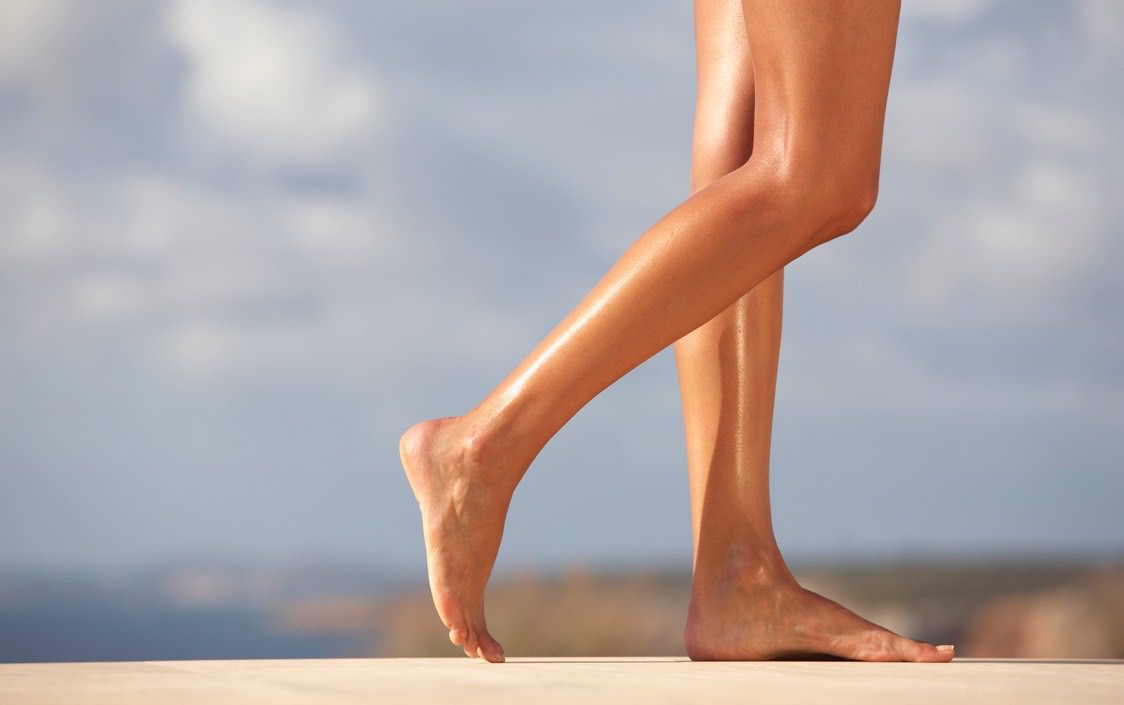Description of illness and treatment
Varicose veins are fattened, bent and painful veins, filled with blood. They usually develop on the leg area. Normal and healthy veins have valves which guarantee that blood does not stay in one place inside the veins. Valves in varicose veins are either damaged or even completely absent. Such veins are consequently constantly filled with blood, especially when a person is standing up. Varicose vein stripping is carried out in the operation theatre and hospitalization is mandatory. The operation can be conducted under general anaesthesia or regional (spinal) anaesthesia, meaning the patient feels no pain. The procedure lasts approximately one to two hours.

Often, patients decide to undergo vein stripping for aesthetic reasons.
The surgeon performs several incisions on the leg:
The incision in the groin area is larger (about 2 cm), since this is the spot where we cut the entry of the diseased vein into the deep vein system,
the second incision is made at the height of the knee or the calf.
A short wire is introduced at the groin area, which has a specially-shaped head at the end. The wire is then guided downwards through the vein and pulled out at the calf area. By pulling the wire down the leg, the head of the wire takes the vein with it and the latter is then removed through an incision in your calf.
By using additional "mini" incisions and a special hook, we then need to remove the varicose changed veins on the calf.
The surgeon closes the wounds with stitches which we cover in a sterile way, bandaging the leg with elastic bandages from the toes to the groin.
Why is this operation performed?
Vein stripping is recommended for:
varicose veins which cause problems in the blood flow (venous insufficiency),
leg pain, described by patients as heavy legs,
ulcers caused by poor blood flow in the veins,
inflammation of the superficial veins and clots in the superficial veins,
aesthetic reasons.
Today, we can treat varicose veins using several techniques. We only offer vein stripping.
Risks with the procedure
Vein stripping is generally a safe procedure; however, there can be complications.
General complications during the surgical procedure:
Bleeding,
Infection of the operative wounds,
post-operative pain.
Complications during vein stripping:
Scarring at the place of the operative wounds,
Nerve damage,
Recurrence of varicose veins.
Make sure not to eat for at least 6 hours before the expected surgery. Take the medicine, which you regularly take, with a sip of water.
Please, tell us about all the other medication you are currently taking, if you have any other chronic illnesses and if you have a known allergy to certain medication.
After the operation
Keep your legs bandaged for 3 days with an elastic bandage in order to reduce swelling and bleeding. Continue to bandage your legs for a further 21 days using an elastic bandage during the day.
Rest with your legs in the air.
We recommend you take pain medication, should you feel pain, taking care to follow instructions in the discharge letter.
We recommend 10 to 12 short walks for the first 3 days. They should last between 5 and 10 minutes. Make sure not to sit too long or stand in one place. After three days, we also recommend longer walks (up to half and hour), several times each day.
Get your stitches removed by your private physician in about 10 days following the surgery.
You will most probably be ready for normal work after three weeks, when you can stop bandaging your legs; if your legs still swell up, we recommend you continue wearing elastic bandages during the day or wearing compression socks.
Results
Vein stripping is normally a very successful method of treating diseased superficial veins. It reduces leg pain, which is the consequence of diseased veins, it reduces leg swelling and improves the general look of your legs. Vein stripping can sometimes leave scars.